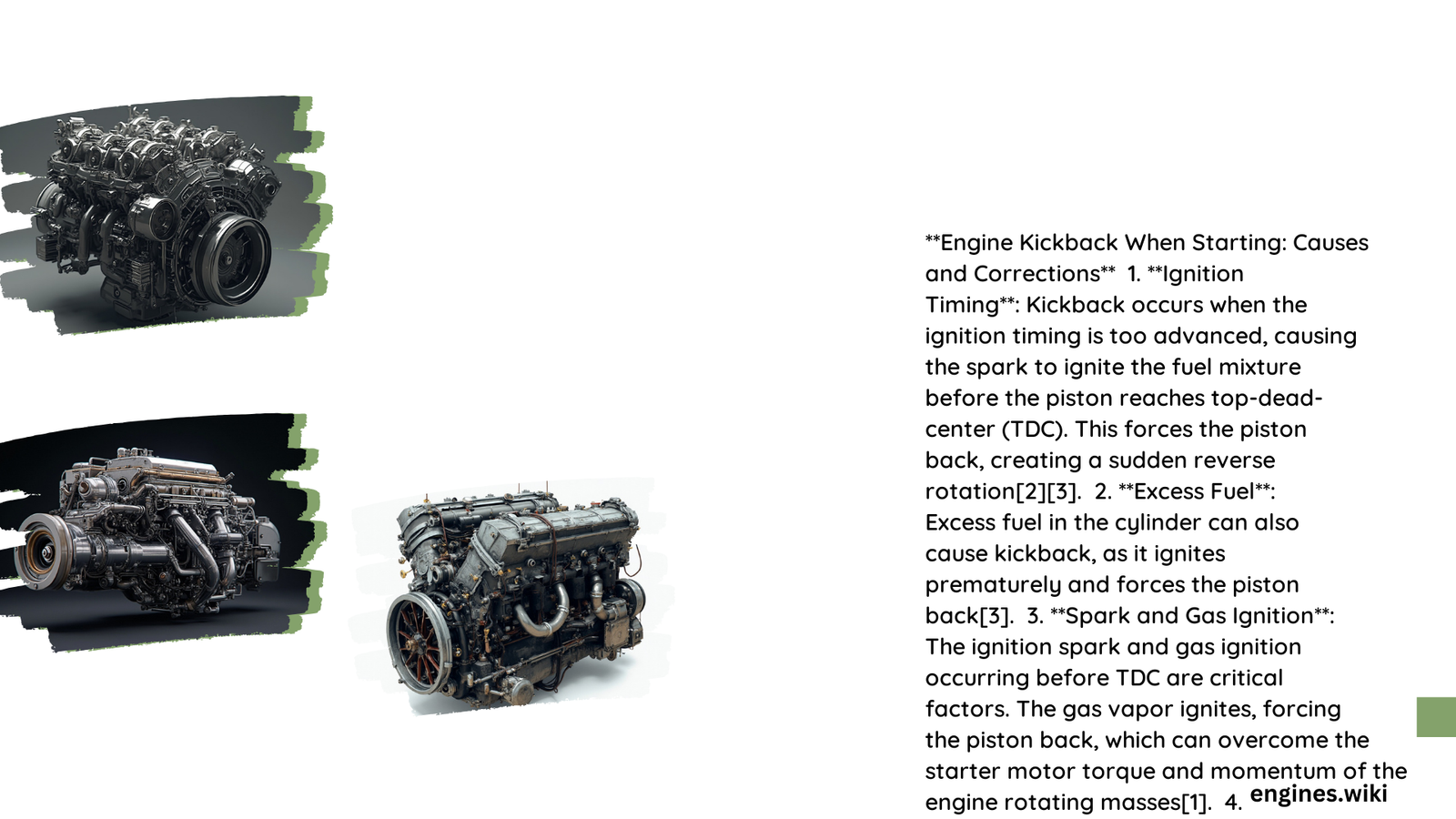Engine kickback during startup is a complex mechanical phenomenon that can cause significant damage to your vehicle’s starting system. This critical issue occurs when the engine’s internal components experience unexpected reverse rotation, potentially breaking starter components, damaging flywheel teeth, and creating potentially dangerous startup conditions. Understanding the intricate mechanics behind kickback is essential for preventing costly repairs and ensuring reliable vehicle performance.
What Causes Engine Kickback During Startup?
Why Does Ignition Timing Trigger Kickback?
Ignition timing plays a crucial role in engine kickback. When the timing is excessively advanced, typically beyond 15-20 degrees Before Top Dead Center (BTDC), the risk of premature combustion increases dramatically. This can cause the piston to move in the opposite direction, creating a violent kickback effect.
Key Timing Factors
- Optimal timing range: 10-15 degrees BTDC
- Excessive advance: Higher than 20 degrees
- Potential consequences: Starter damage, component stress
How Do Electrical Systems Contribute to Kickback?
Electrical system irregularities can significantly impact engine startup. Issues like:
– Incorrect distributor rotor alignment
– Faulty spark plug wiring
– Inconsistent electrical trigger signals
Can create conditions where electrical energy finds unintended paths, causing cylinders to fire out of sequence.
Diagnostic Techniques for Engine Kickback

What Tools Are Needed for Diagnosis?
| Tool | Purpose | Estimated Cost |
|---|---|---|
| Timing Light | Verify ignition timing | $50-$100 |
| Multimeter | Check electrical systems | $30-$80 |
| Compression Gauge | Test cylinder pressure | $20-$50 |
| Spark Plug Gap Gauge | Ensure proper spark plug settings | $5-$15 |
How to Perform a Comprehensive Kickback Diagnosis?
- Timing Verification
- Use timing light to check ignition advance
- Adjust to manufacturer’s recommended specifications
-
Typically 10-15 degrees BTDC
-
Electrical System Inspection
- Check distributor cap for wear
- Inspect spark plug wires
-
Verify consistent electrical signals
-
Compression Testing
- Measure individual cylinder compression
- Look for significant variations
- Identify potential internal engine issues
Prevention and Mitigation Strategies
Can Kickback Be Prevented?
Preventing engine kickback requires a multi-faceted approach:
– Regular maintenance
– Precise ignition timing
– Quality electrical components
– Professional periodic inspections
What Modifications Help Reduce Kickback?
- Install retard switch
- Use high-quality starter adaptors
- Modify flywheel engagement
- Implement advanced timing control systems
Cost Considerations
Addressing engine kickback can range from minimal DIY adjustments to significant professional interventions:
– Basic timing adjustment: $50-$100
– Starter motor replacement: $200-$400
– Comprehensive electrical system repair: $300-$700
Expert Recommendations
Automotive experts consistently emphasize:
– Never ignore persistent kickback symptoms
– Address issues immediately to prevent cascading damage
– Consult professional mechanics for complex diagnoses
Technical Insights
Engine kickback represents a complex interaction between mechanical, electrical, and combustion systems. Understanding these intricate relationships is key to effective prevention and resolution.
Final Technical Note
While this guide provides comprehensive insights, each vehicle presents unique characteristics. Professional diagnostic equipment and expert evaluation remain the most reliable methods for resolving persistent kickback issues.
